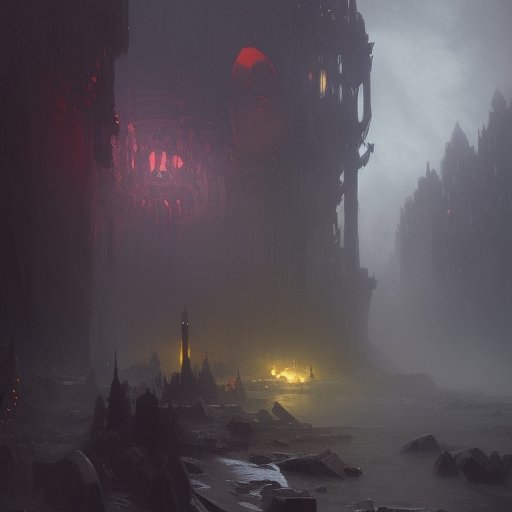
Attention science fiction enthusiasts! Have you heard about the Big Squeeze? Brace yourself for the ultimate test of compression and expansion. This article focuses on the science behind it all, from atmospheres to gravity control, and communication to collaboration. Drawing inspiration from some of our favorite books like Dune, Red Mars, Ender’s Game, and A Fire Upon the Deep, we will explore how each highlights key concepts for bouncing back from the Big Squeeze. We’ll look into the future, ponder what’s in store, and most importantly, get you ready for the Big Bounce!
I. Introduction
Greetings, fellow space travelers! Strap in and hold on tight, because we’re about to embark on a journey through the cosmos like no other! That’s right, you’ve heard the rumors, and now it’s time to get ready for the Big Squeeze and the Big Bounce.

What exactly do we mean by these mysterious terms, you ask? Well, dear reader, it’s quite simple, really. The Big Squeeze refers to the compression of objects, whether it be planets, stars, or even entire galaxies. And the Big Bounce? That’s the eventual expansion that follows after the compression.
Now, some of you may be thinking, “Why on earth (or rather, in space) should I care about all this squeezing and bouncing?” Trust us, there’s plenty of reason to care. From the science of compression and expansion to the importance of atmospheres and gravity control, the Big Squeeze and the Big Bounce have far-reaching implications across the universe.
But don’t just take our word for it. Throughout this article, we’ll be delving deep into the world of science fiction to explore the ideas and concepts that underpin these phenomena. We’ll be referencing everything from Frank Herbert’s Dune to Orson Scott Card’s Ender’s Game, and beyond.
So, fasten your seatbelts and make sure your oxygen supply is topped up (you know, just in case), because things are about to get wild. Are you ready for the Big Squeeze and the Big Bounce? We certainly hope so, because there’s no turning back now!
II. The Science of Compression and Expansion
Now that we’ve set the scene, it’s time to dive into the real meat of the matter: the science of compression and expansion. At its most basic level, compression refers to the process of reducing the size or volume of an object, while expansion is the opposite – increasing the size or volume of an object.

But when we’re talking about objects on a cosmic scale, things get a little more complicated. Compression can occur due to a variety of factors, from the gravitational pull of nearby objects to the explosive force of a star going supernova. And once an object has been compressed to a certain point, it’s bound to bounce back – to expand – due to the fundamental laws of physics.
One key factor in the compression and expansion of cosmic objects is atmosphere. This is particularly true for planets and moons, which rely on their atmospheres to regulate temperature, provide oxygen, and protect them from harmful radiation. Take Mars, for example. The lack of a thick atmosphere on Mars means that the planet is much more susceptible to the effects of the Big Squeeze and the Big Bounce than a planet like Earth.
Another important aspect of compression and expansion is the role of gravity. As we learned in Orson Scott Card’s Ender’s Game, the ability to control gravity is a major game-changer when it comes to bouncing back from compression. If you can artificially manipulate gravity, you can essentially counteract the effects of the Big Squeeze, allowing planets and stars to maintain their shape and size over longer periods of time.
Of course, as anyone who’s read Vernor Vinge’s A Fire Upon the Deep knows, no one can survive in the cosmos alone. Communication and collaboration are key when it comes to dealing with the Big Squeeze and the Big Bounce on a large scale. By working together and pooling our resources and knowledge, we can better understand and combat the forces of the universe.
III. From Dune to Red Mars
Atmospheres, dear reader – they may seem like a simple concept, but they’re absolutely crucial when it comes to our discussions of the Big Squeeze and the Big Bounce. From the desolate sands of Dune to the harsh, rocky terrain of Red Mars, atmospheres play a major role in determining the fate of our celestial objects.

Let’s start with Dune, shall we? This classic work of science fiction from Frank Herbert introduces us to a barren, arid planet that’s all but devoid of water. Without an atmosphere to retain moisture or regulate temperature, life on Dune is a constant struggle. The planet is subject to fierce sandstorms and sweltering heat — all of which make it an incredibly hostile place to live.
Meanwhile, in Kim Stanley Robinson’s Red Mars, we see a planet that’s been thoroughly terraformed by humanity. In this vision of the future, massive atmosphere generators have been used to convert the thin, unbreathable air on Mars into a much more comfortable environment. Skies are blue, temperatures are moderate, and life thrives.
But what happens when these atmospheres are disrupted? Well, that’s where things get interesting. Whether through natural disaster or human intervention, changes to atmospheres can have disastrous consequences. Take Earth, for example. We’re currently facing a very real threat in the form of climate change, which is causing our atmosphere to heat up and destabilize. As a result, we’re seeing more extreme weather events and rising sea levels, among other problems.
So what can we learn from all of this? Simply put, atmospheres are incredibly important things to study and understand. They have the power to shape our worlds, for better or for worse. As we explore the Big Squeeze and the Big Bounce, we’ll see that atmospheres will continue to play a critical role in determining the future of our universe. Stay tuned!
IV. Ender’s Game and Gravity Control
Now, as we journey deeper into the world of science fiction, we come to a pivotal text of the genre: Ender’s Game by Orson Scott Card. In this novel, we see how gravity control can be the key to bouncing back from the Big Squeeze.

For those who may not be familiar with the story, allow us to set the scene. Ender Wiggin, a young prodigy, is tasked with saving humanity from an alien race known as the Formics. To do this, he enlists in Battle School, where he learns the art of war in zero gravity environments.
Here’s where it gets interesting. The novel hypothesizes that gravity, or rather, the lack thereof, can actually alter the way the human brain works. In a zero-g environment, the brain is forced to constantly adapt, causing it to become hyper-efficient in problem-solving and decision-making.
But that’s not all. By manipulating the gravity on their ships during battles, Ender and his team are able to gain an advantage over their opponents, using gravity control as a kind of secret weapon.
So, what does all this have to do with bouncing back? Well, it’s simple. If we can develop the technology to manipulate gravity, we may be able to counteract the effects of the Big Squeeze. By creating artificial gravity fields, we could give the impression of expanded space, effectively bouncing back from the compression.
Of course, we’re not quite there yet in terms of technology, but it’s an exciting prospect nonetheless. And who knows, maybe someday we’ll look back on Ender’s Game as a prophetic text, predicting the future of human spaceflight. The possibilities are endless, and we’re only just scratching the surface. So, let’s keep our eyes on the stars, and our minds open to the possibilities of gravity control. Who knows what new worlds we might discover?
V. A Fire Upon the Deep
Now, dear reader, let’s talk about communication and collaboration in times of crisis. When facing the Big Squeeze or the Big Bounce, it’s not enough to simply rely on your own wits and resources. No, in order to survive, you must learn to work together with those around you.

This concept is explored in depth in Vernor Vinge’s A Fire Upon the Deep, which details a universe in which different civilizations are located in vastly different regions of the cosmos, separated by the “Unthinking Depths” – a barren and untraversable expanse of space.
When a deadly threat emerges, these civilizations must put aside their differences and work together to eliminate it. The story examines the many ways in which communication and collaboration are essential in times of crisis, and how even small differences can lead to catastrophic outcomes.
In the world of A Fire Upon the Deep, communication takes many forms, from the direct, real-time transmissions of the “Singularity” to the much slower and more deliberate transmissions of the “Low Beyond”. Different civilizations even have their own unique methods of communication, such as the binary code of the robotic “Tines”.
But no matter the form of communication, it is always crucial in times of crisis. Without it, disparate groups would be unable to coordinate their efforts or share vital information. And without collaboration, even the strongest civilizations would be unable to face the challenges of the Big Squeeze or the Big Bounce.
So, dear reader, we must all take a lesson from Vernor Vinge’s masterful sci-fi epic. When facing the unknown, communication and collaboration are the keys to survival. By putting aside our differences and working together, we can overcome even the most daunting of obstacles.
VI. The Future of Bouncing Back
And now, dear readers, let us turn our gaze towards the future of bouncing back. As we’ve explored throughout this article, compression and expansion, the Big Squeeze and the Big Bounce, have enormous implications for our understanding of the universe.

But what about practical applications? How might we harness these cosmic forces for our own benefit? The possibilities are truly staggering.
Imagine, for instance, the ability to manipulate gravity on a large scale, allowing us to control the motion of entire planets and stars. The potential for such technology is immense, from powering entire civilizations to traveling between galaxies at previously unimaginable speeds.
Or what about our understanding of atmospheres? As we continue to explore and colonize our own solar system, our knowledge of atmospheric composition and manipulation will be vital for building sustainable habitats and protecting ourselves from the harshest conditions of space.
Of course, as with any scientific discovery or advancement, there are always potential dangers and ethical concerns to consider. How might the manipulation of gravity, for example, impact the delicate balance of the universe? How can we ensure that our actions don’t have harmful and irreversible consequences?
These are questions that will need to be addressed as we move forward, but there’s no doubt that the future of bouncing back presents a wealth of both promise and challenge.
So, whether we’re talking about colonizing new worlds, powering our civilizations, or simply expanding our understanding of the universe, the possibilities are truly endless. The Big Squeeze and the Big Bounce may sound intimidating, but with the right knowledge and technology, there’s no limit to what humanity can achieve. Get ready for an exciting future, space travelers!
VII. Conclusion
And there you have it, fellow space aficionados! The Big Squeeze and the Big Bounce may sound like fanciful concepts pulled straight from the pages of science fiction, but they’re very real phenomena with far-reaching consequences.

From the science of compression and expansion, to the implications for gravity control, atmospheres, and interstellar communication, the applications of these concepts are vast and varied.
So, what does the future hold for the Big Squeeze and the Big Bounce? Well, as with most things in life (and in space), only time will tell. But one thing is for sure: we’ll be keeping a close eye on these phenomena, and the technologies and scientific breakthroughs that arise as a result.
Will humanity one day harness the power of the Big Bounce for interstellar travel? Will we find a way to control the compression of stars and galaxies, unlocking previously unimagined knowledge about the universe and our place in it? Who knows!
All we can say for sure is this: with the boundless imagination and thirst for knowledge that defines humanity, the possibilities are endless. So let’s embrace the Big Bounce and all of the wonders that the universe has to offer, and continue our journey through the cosmos with passion, curiosity, and wonder. Are you ready for the next big adventure? We certainly are!






